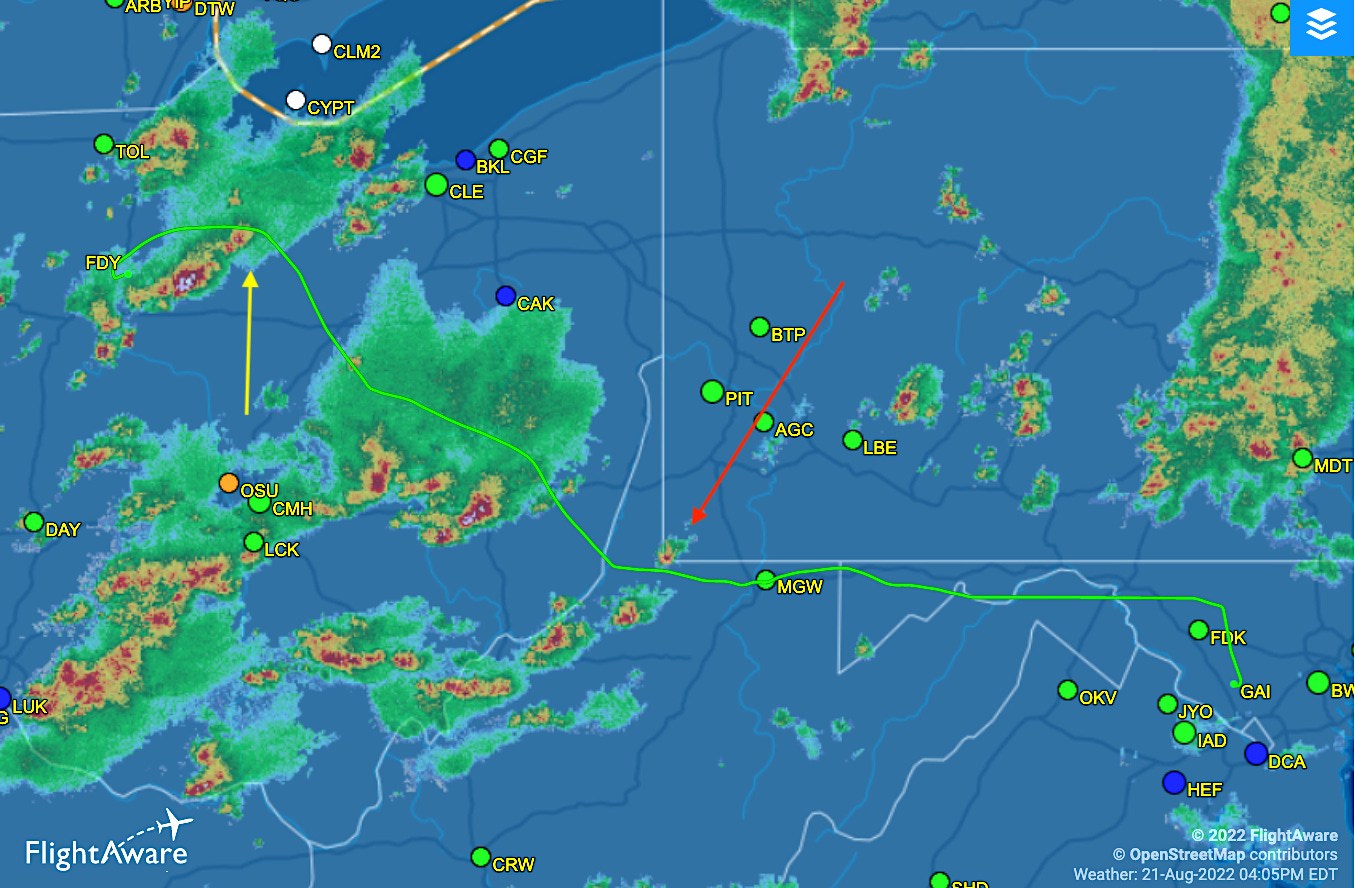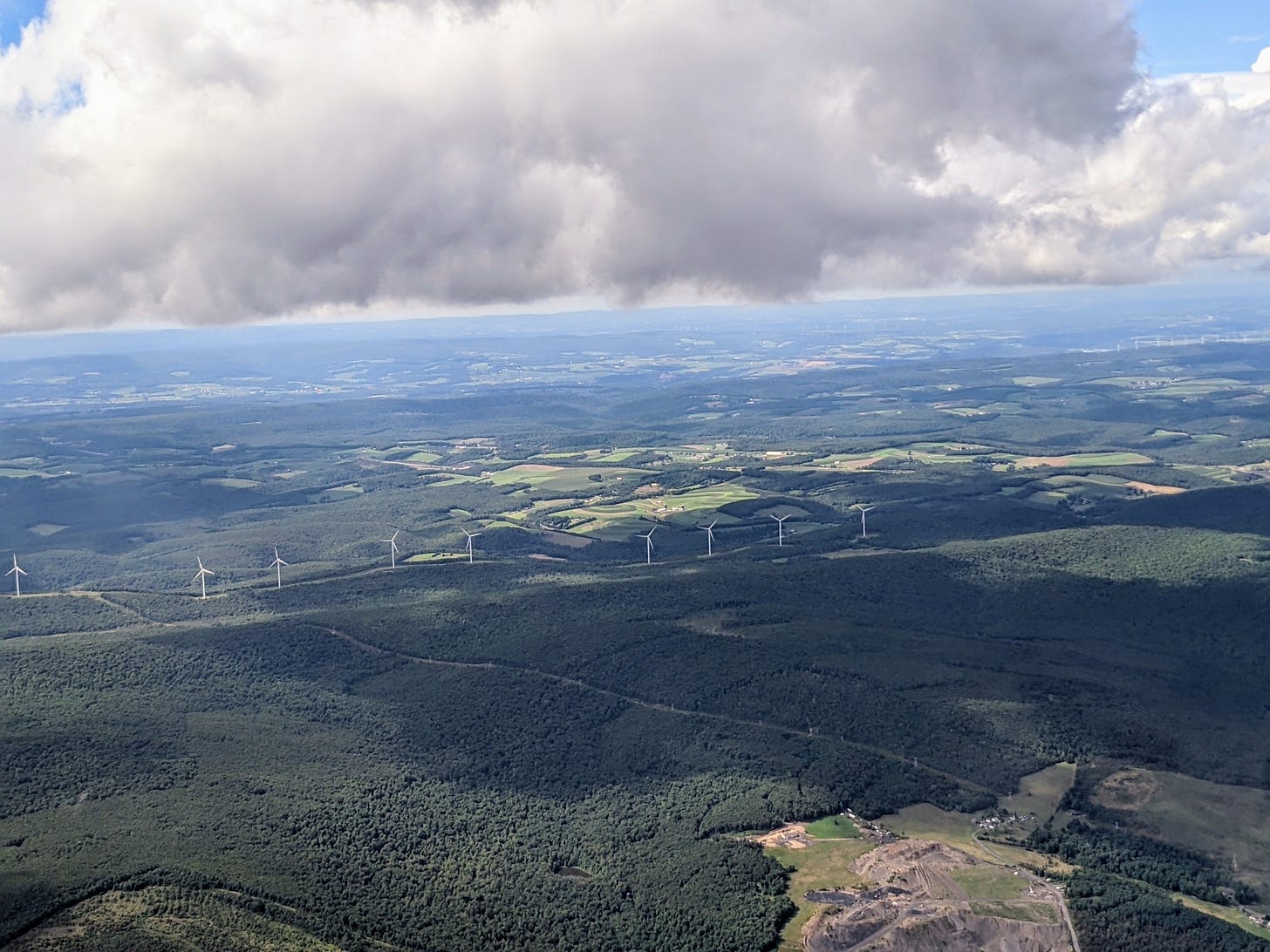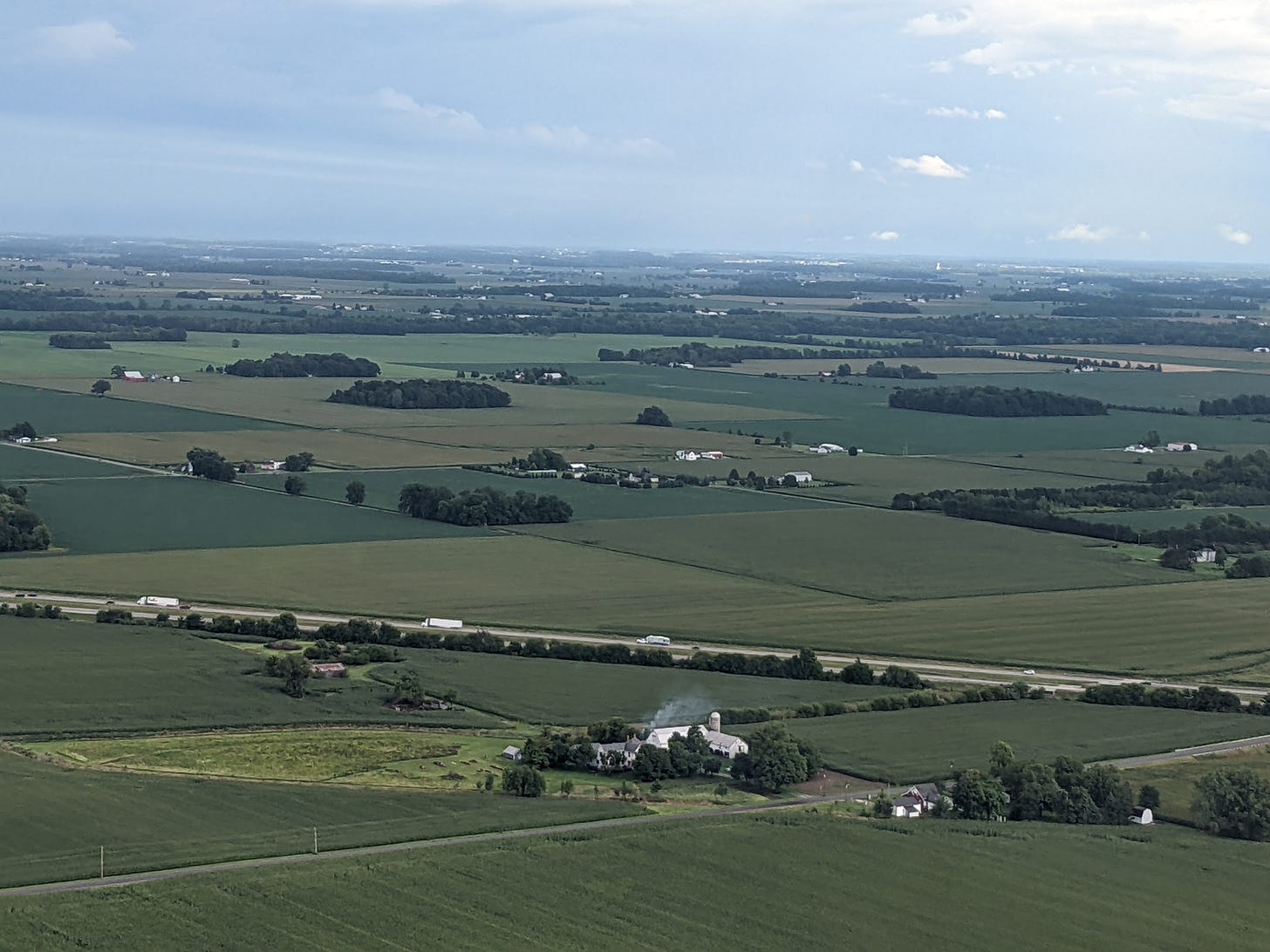
Inside the Sky was the title of my friend William Langewiesche’s collection of elegant essays about flying, published nearly 25 years ago. I’m borrowing it in this post, which has two related purposes.
One is to offer another instance of a recurring theme: the quiet, disciplined competence of the women and men who coordinate the flow of air traffic through the skies. (Previously on this theme, here and here.) The other is to give some illustrations of how different the view of landscapes and weather is from a few thousand feet up, versus the view from the ground.
‘We’ll keep an eye out for you.’
I’ll save for another time, not too long from now, what I’ve learned about the flying world in 25 years of involvement. Much of it involves risk-management and safety. Everyone (sensible) who has ever flown an aircraft thinks about safety all the time. And much of that thought, as in the dispatch today, involves weather, which is the great divider between safe and unsafe flights.
Also for upcoming discussion: Half the entrepreneurial energy in aviation these days is aimed toward reducing its environmental damage. Even more is needed. More on this ahead too.
For now, an illustrated guide to our most recent “working” flight. This past weekend, my wife, Deb, and I traveled from the DC area to northwest Ohio, for small-town reporting here.
I’ll start with a FlightAware track of this trip, which illustrates my point about air-traffic controllers.
The thin green line on the map is the path we took from Gaithersburg (GAI), in the DC area, across the Maryland panhandle, then West Virginia, and finally Ohio, to a landing at Findlay airport (FDY).
One great FightAware feature is overlaying weather radar on aircraft flight tracks. But their weather-radar depiction raises fascinating point-in-time questions.
The flight as a whole took nearly two and a half hours. But the weather image is from one moment in that period—a moment late in the fight, perhaps just after we’d landed. Here’s one reason I think that: The huge area of bad weather shown over central Pennsylvania in this image, far north of DC, was in reality slightly north of the DC area when we took off. We had been waiting it out on the ground. (Aviation people: I was waiting for the ceiling at GAI to be higher than 1000 feet before taking off. It was “Broken 1,700” at takeoff time.)
And the ominous red-and-yellow storms that seem to cross the plane’s path in northern Ohio, shown by the yellow arrow, were in reality farther west and south, allowing us more clearance, when we flew by.
Still, the image conveys the main point. There was weather to be aware of and avoid.
What else we saw from the sky.
Here are some further points to notice:
Seeing a downpour, from cloud level. Please look for the red arrow on the FlightAware map. It is pointing toward a very small, circular red area, meaning heavy rain, at the West Virginia / Pennsylvania border.
The picture at the top of this post shows that same downpour, as we passed it off our right wing, in smooth air several miles away.
Amid the clouds, but not in them. The whole trip was under “instrument flight rules,” which means controllers were telling us which way to head, and when to climb or descend. But only about half of it was in “actual” instrument conditions—meaning that you’re inside the clouds, and can’t see anything except gray. For me and I think most people, being inside the clouds is no fun. Often it’s turbulent; always it requires extra concentration.
Therefore, like many other pilots I was hearing on the air-traffic control frequency, I spent much of the flight asking the controllers for deviations right and left to stay out of the the clouds as much as I could. That’s shown in the jerky path on FlightAware.
Here is how it looked from Deb’s seat in the plane, along the Maryland panhandle over West Virginia, to be amid the clouds but not actually in one:
Flying in the rain, but away from the storms. Please notice on the FlightAware chart the broad green-colored areas in Ohio, one between Columbus and Akron, and another between Toledo and Cleveland. Green means “normal” rain, not a thunderstorm. While flying through these areas at 4,000 feet we were inside the clouds—solid gray outside the windows, rain falling on wings and windshield—but were rarely in turbulence. The sweeping paths of the flight through the green zones reflected the successive “vectors” from air traffic controllers designed to keep us away from the serious weather, shown in red and (uh-oh) magenta, but working toward the destination.
We were relying on controllers for right/left adjustments through this period, and they were aware of that. “I’ll keep an eye out for you,” one said as we were near the point shown by the tip of the yellow arrow. And she did. (Again, in real time the bad weather was farther away than it looks, and the clearance margins greater.)
On the basis of Pushing Tin or even Airplane! people may have the idea of air traffic controllers being in constant hair-on-fire emergencies. Of course they do handle crises, but to me their routine unflappability is their most notable and admirable trait.
Coming out the other side. About 25 miles from our destination, which is close enough that you’re well into the checklist to land, we suddenly left the clouds behind us. Before us we saw this, looking westward and away from the storms:
And a few minutes later, on the ground and looking east toward the stormy sky we had traversed:
If the weather had been worse around Washington, we wouldn’t have taken off. If it had not cleared around Findlay, we would have landed somewhere else. If we’d needed to divert at any point along the way, we were prepared to do that. We’ve spent nights in unexpected locations more times than we can count. In small-plane aviation, it is crucial that you never “have” to get somewhere.
But this is what it looked like, inside the sky, on one trip in which we ended up where we intended.








“Termination Shock,” by Neal Stephenson: An Excerpt :
...As Papa had explained to her long ago, there was a reason he had become a pilot. It was that when he was at the controls he had not merely the opportunity but the sacred obligation to focus solely on the machine that was keeping him and his passengers alive.
...Always fascinating to her was this slow inexorable zooming in. Twenty minutes ago she’d have found it difficult to pick out the greater Waco metropolitan area below the black-blue vault of the stratosphere, but now as they dropped through a hundred meters of altitude she could see, in the backyards of houses, blue swimming pools..
....Houston’s air was too hot to support airplanes. Oh, the queen’s jet could have landed there, given that, during the flight from Schiphol, it had converted ten thousand kilograms of fuel into carbon dioxide and dumped it into the atmosphere. Refueled, though, it could not safely take off until the heat wave broke. And what was going to break it was a hurricane.
...She felt a sense of freedom and clarity of mind while at the controls of an airplane during the descent and the preparations for landing. It was all a matter of operating the controls so as to keep certain numbers within certain ranges.
...At the same time they needed to pass vertically downward through the entire troposphere—the shell of air surrounding the earth, where weather happened—until the number on the altimeter matched whatever the altitude of Waco was. Again there were known procedures for achieving that, all of which needed to mesh with the series of turns dictated by those harried Texan air traffic controllers. The operation of the jet’s controls toward the systematic achievement of those objectives, the terse, pithy, but utterly calm exchanges with Johan and with the voices on the radio, all combined to put her into a state of being that the Dutch referred to as normal with the accent on the second syllable. A different thing altogether from the English “NORMal.”
In the distant past, kings had shown the world that they meant it by strapping on a sword and riding into war, putting their lives on the line. Getting behind the controls of a plane and pointing it at a runway was as close as one could reasonably come in the modern world to the same public blood oath.
https://www.nytimes.com/2021/11/16/books/review/termination-shock-by-neal-stephenson-an-excerpt.html
Like your writing and your flying. It's nice to get away from the deluge of stories about the former guy.